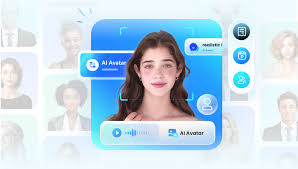Now, thanks to AI and machine learning enabled tools for free voice clone downloads this task can be simplified at even greater. Users can convert written text into voice with the help of these platforms, making it possible to sound just as lifelike. Irrespective of the model, one key consideration in this process is the scale and quality of datasets employed to train AI. Voice clone platforms generally need 5–10 minutes of audio input to produce a decent voice-model. Longer clips of clear voice data can be used to greatly increase fidelity up to 30% or more using advanced systems.
To change the spoken language into a form of text, you need to select an online free voice cloning tool. There are many different voice cloning services in the world of technology, but here on DUPDUB you will discover a free opportunity to replicate any human voices online and speech synthesis with just one click! You provide your text, select the cloned voice and generate an audio of reading that provided text. Similarly, with DUPDUB you can input up to 5k characters per conversion session which makes it a good choice for smaller projects such as video scripts/filet transcription of educational content or narration.
These tools offer fast processing time as one of the key feature. Currently-available free voice clone systems, while slower than paid options, can get text-to-speech conversions similar in the clip below for 8 minutes and less. The audio quality, on the other hand is bound to be accurate only and it simply relies on data of voice provided in tensorflow during training phase. Mozilla TTS is an open-source project that offers simple voice cloning capabilities to generate easy-to-understand natural speech without the tonal nuances or emotional aspects of more advanced solutions.

Text-to-Speech (TTS) function works by transforming a given text into phonetic structure that the AI voice model can understand. This is then processed by a machine learning model to generate speech in the target voice. Most free platforms will have basic models that can emulate points of speech and tone, but end emotions may churn out as complicated cues to underperform them. While the AI can, for example, mimic a conversational tone between characters or play side-deguing banter it might not be capable to retaining in more emotional and dramatic dialogues.
As Bill Gates famously says — ‘We always overestimate the change that will occur in the next two years and underestimate the change that will happen in ten. It shows how quickly voice cloning work has advanced (we wrote that these developments transformed such areas as audiobook narration and customer service automation). The Text-to-Speech market is expected to grow by 14.6% annually until the year 2027 as per a report of Grand View Research.
While these tools are very convenient, they also have their limitations. Free services tend to limit the amount of text that can be processed in a single go, they might also not have as fine control over volume alterations so export audio may sound more compressed or low quality than paid platforms. On the other hand, some free services may also limit commercial applications of cloned voices — which could make them more suitable for hobbies or personal use than professional/business uses.
Platforms are easily zoomed to convert text into a voice, such as DUPDUB where you can automate your workflow using this tool. Visit voice clone text to speech free Follow this link and unlock features such as these which allow you convert your text to speech using cutting-edge technology called Voice cloning.